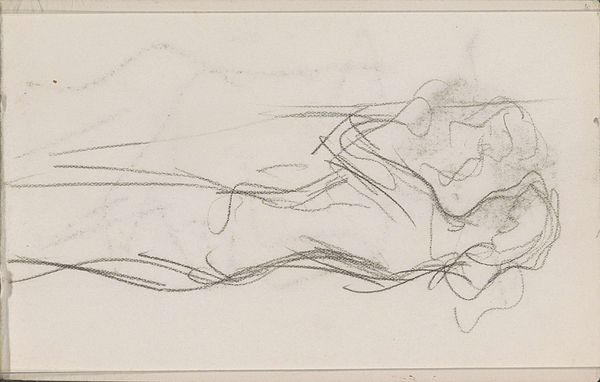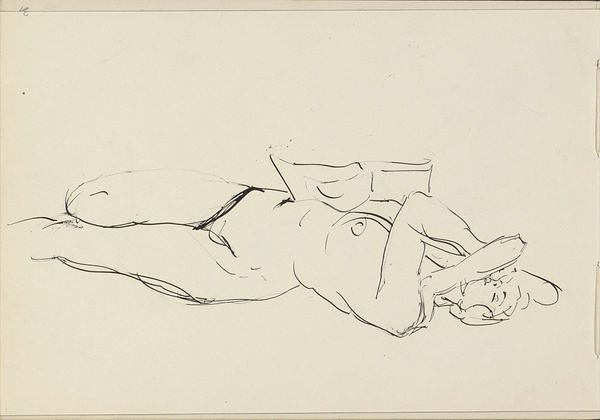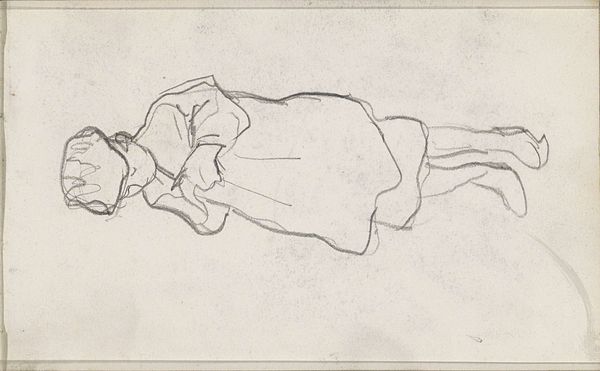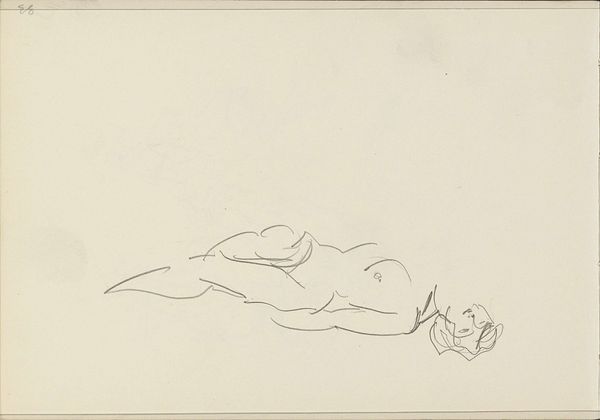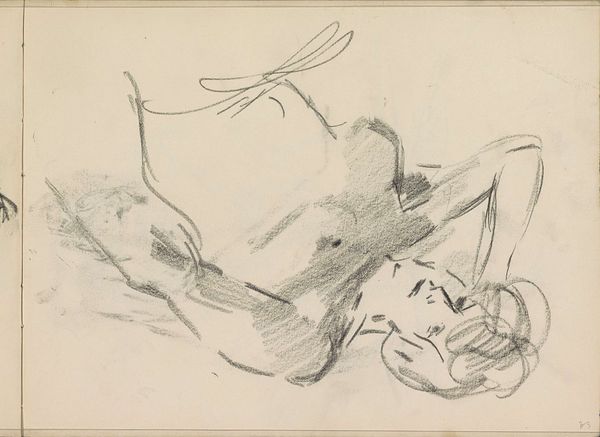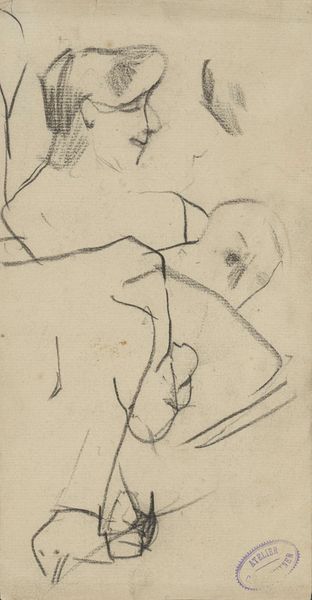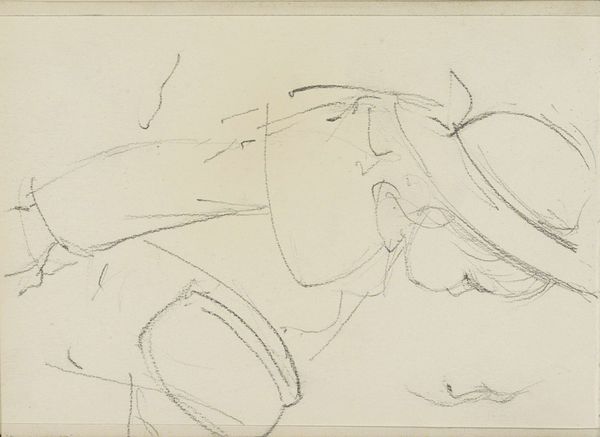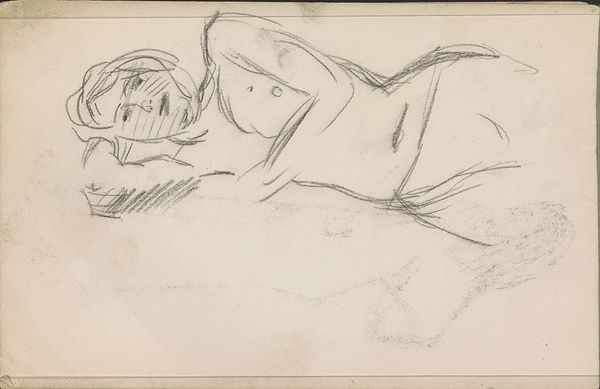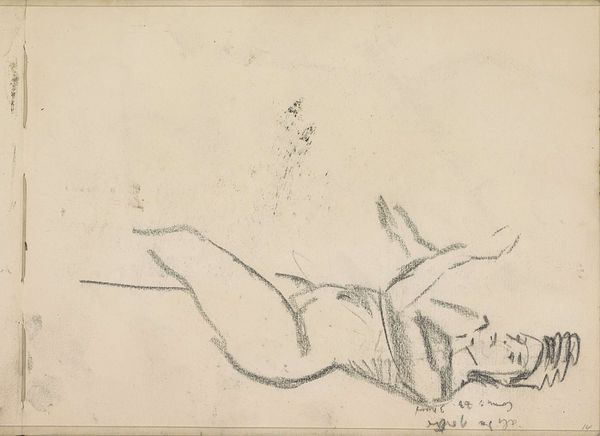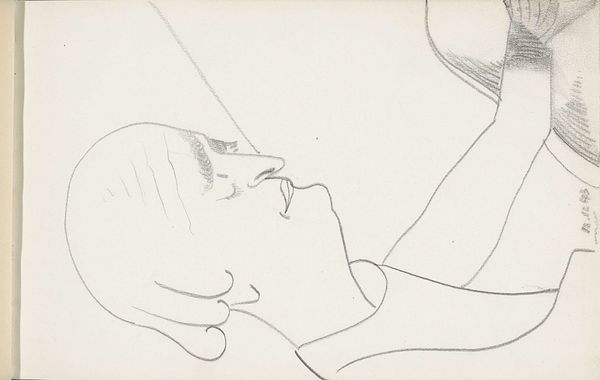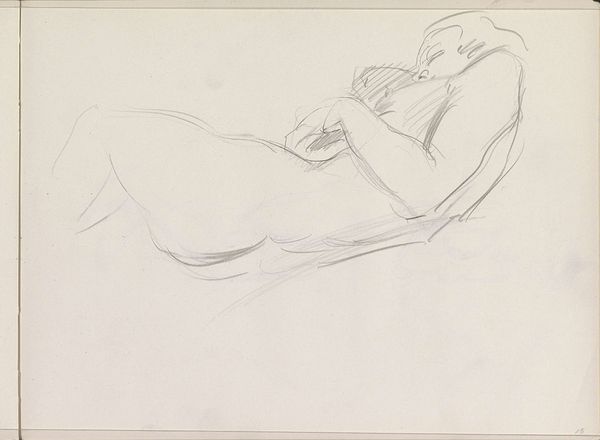
drawing, pencil
#
portrait
#
drawing
#
figuration
#
pencil
#
line
Copyright: Rijks Museum: Open Domain
Curator: My first impression is one of intimacy, even vulnerability, in this pencil sketch. There's a quiet intensity in the figure's relaxed posture, and yet her mind seems very far away. Editor: You’ve zeroed in on exactly why "Vrouw," a pencil drawing by Isaac Israels dating from 1887 to 1934 and housed here at the Rijksmuseum, holds such quiet power. It is deceptively simple in its formal elements. Notice how the linework suggests form without fully defining it? Curator: Right, it's almost dreamlike in its lack of rigid definition. It’s about catching a mood, an interior space. It feels deeply personal. As if we were catching her off guard, and I am always drawn into how an artist depicts their vision of the inner self, or in this case perhaps an imagining by the artist. Editor: Exactly! In the economical use of line and form, there is semiotic loading. Each sparse contour yields many associative meanings about gesture, pose, presentation—yielding multiple impressions in the viewer's mind. Curator: Absolutely. The pose might be casual but the lines convey so much in terms of emotion. Is it tiredness, boredom, melancholy...It could be one or all or some or none! It feels to me as if it could depict any time or era. It has become timeless in her mind’s eye, and in turn now it can become an open invitation for a response. Editor: What a lovely way to put it. Her introspective presentation is heightened through this medium, with pencil allowing Israels to easily embrace chance operations in his aesthetic engagement. Through structural economy and artful openness he reveals a portrait for a modernizing age. Curator: Well, thinking on this I wonder what my takeaway truly is, whether it is really my role to say anything for sure about the art? Or whether it becomes a conversation opener for anyone to think more deeply. I love the power of how things move from the personal and intimate into the open forum, so let’s allow it to do its work, and mine too. Editor: I’m in complete agreement, to which I would only add: what begins in the mind finds expression in the heart, and takes form as the most subtle gesture. And how does our mind complete what has been intentionally left incomplete? A perfect drawing leaves it to the future of us, here now to ask, seek, learn, and interpret again, through us.
Comments
No comments
Be the first to comment and join the conversation on the ultimate creative platform.
